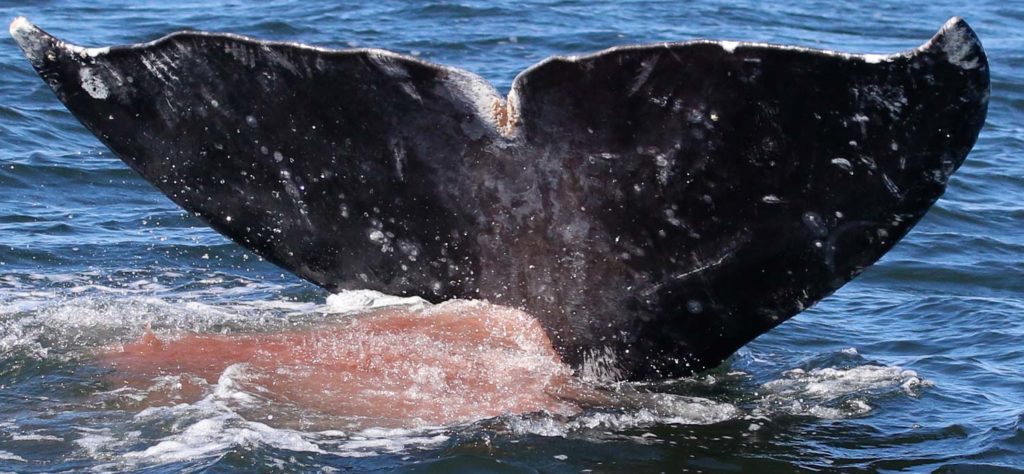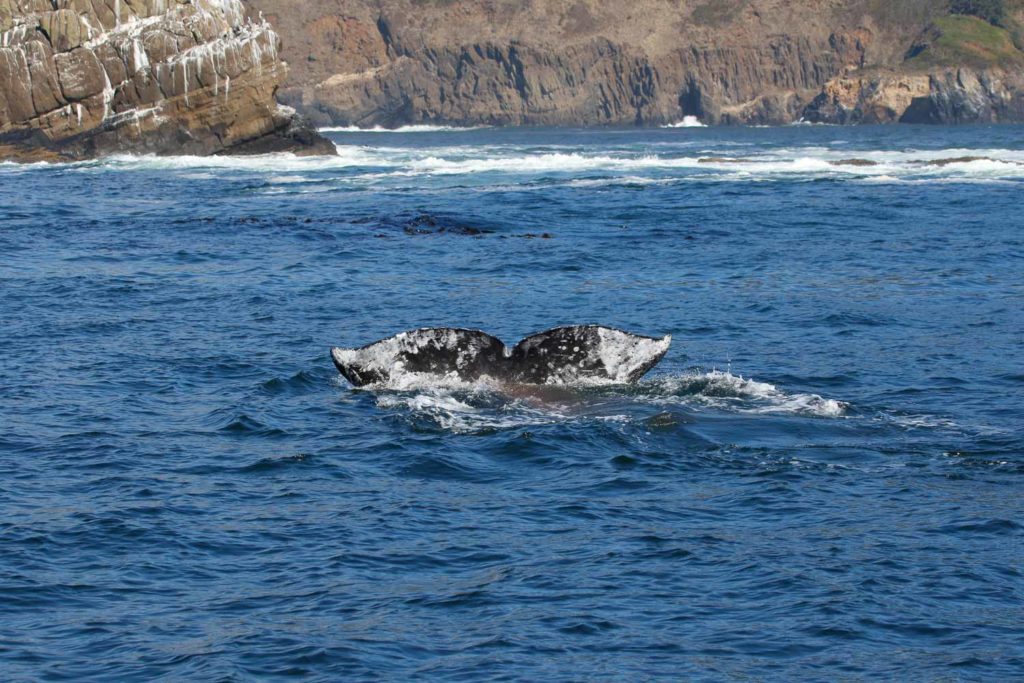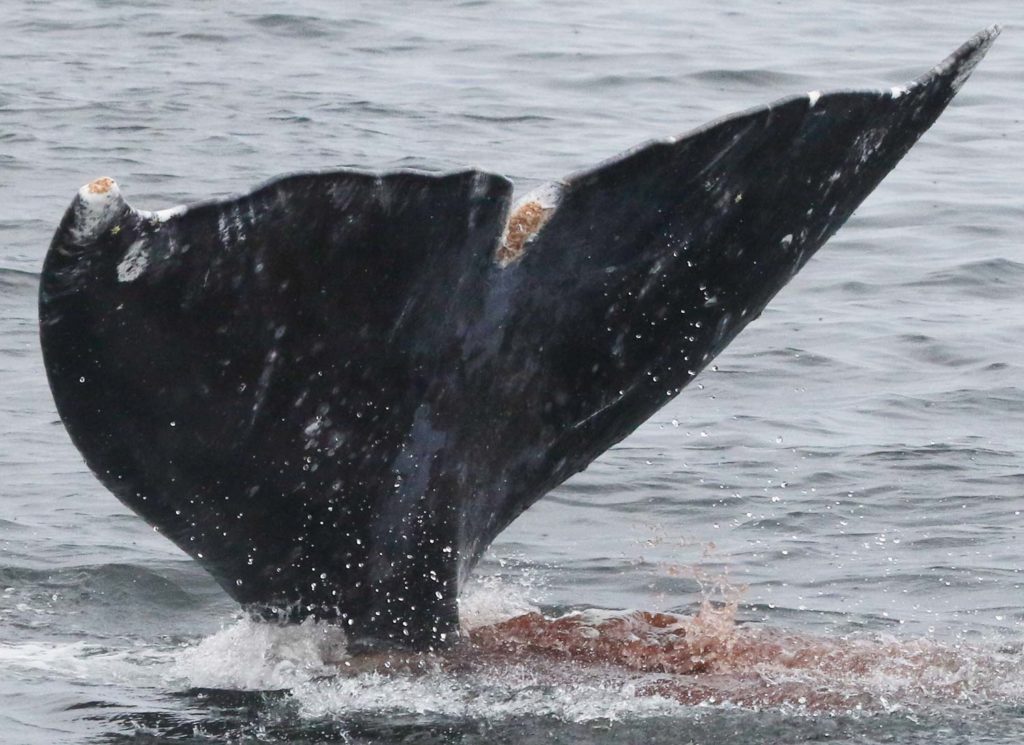Why and How Do We Collect Whale Poop
Whale poop contains molecular data about the whale’s diet, gut microbiome, genetics, toxin loads, and hormone levels. It is amazing how much information is stored within a plume of poop! Our main focus of poop (fecal) sample analysis is to understand the stress and reproductive hormones of whales. This hormone information helps us understand what events might stress out whales and how long they take to recover from stressful events, like ocean noise, limited prey resources, or boat strikes.
Reproductive hormone levels provide information about pregnancy and population reproduction rates. One of the best parts about studying whale poop is that we can collect it non-invasively, allowing us to collect multiple samples from the same individual whales over time without impacting them (this replicate sampling provides great data for comparison). We just wait patiently in the boat for the whale to poop, and then when we observe a reddish-brown plume come from the whale’s rear-end, we scoot around behind the whale to “scoop the poop” with our fine mesh nets. The best way to understand our poop collection methodology is just to see it in action. Let’s go collect some whale gold!



